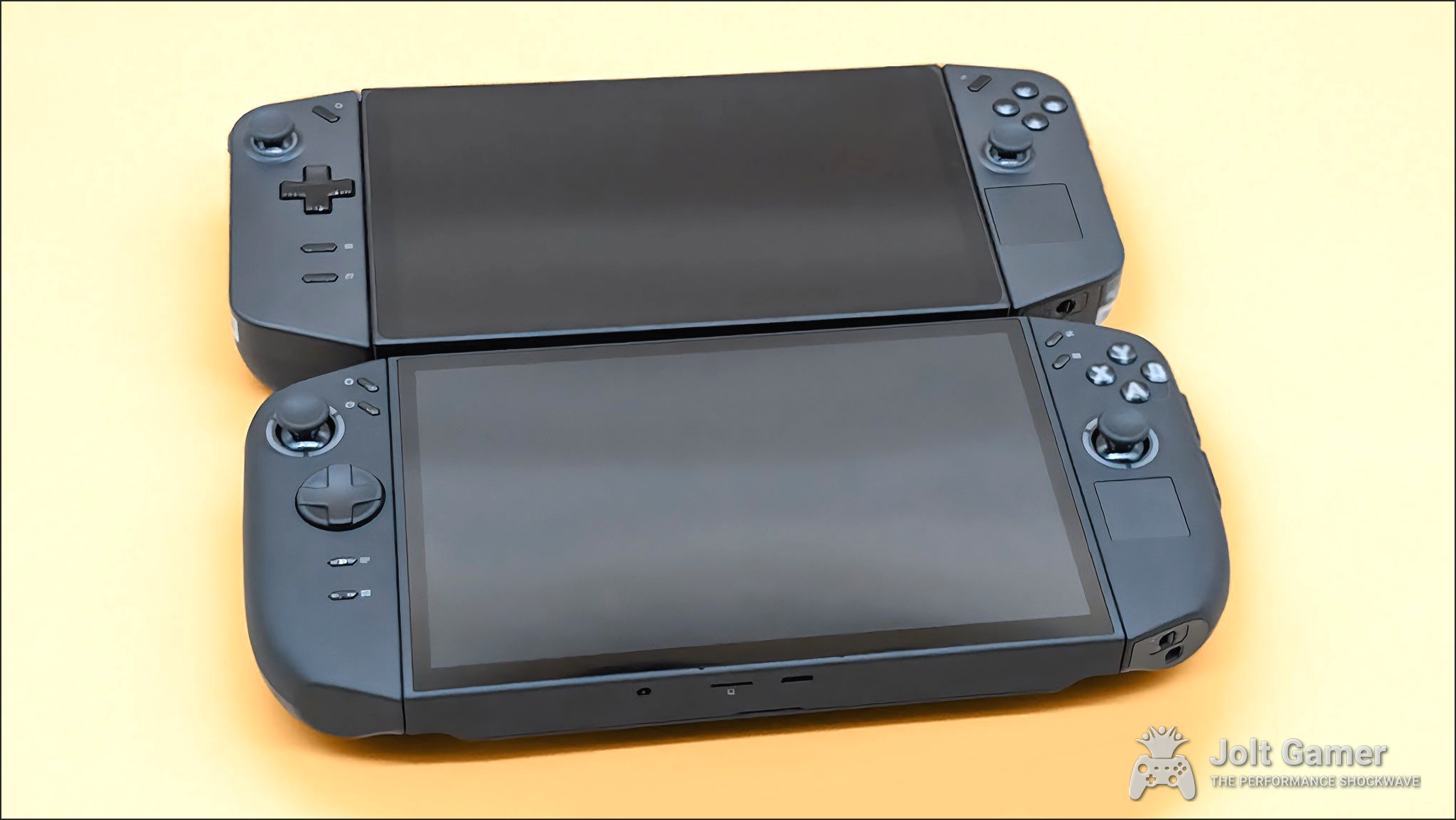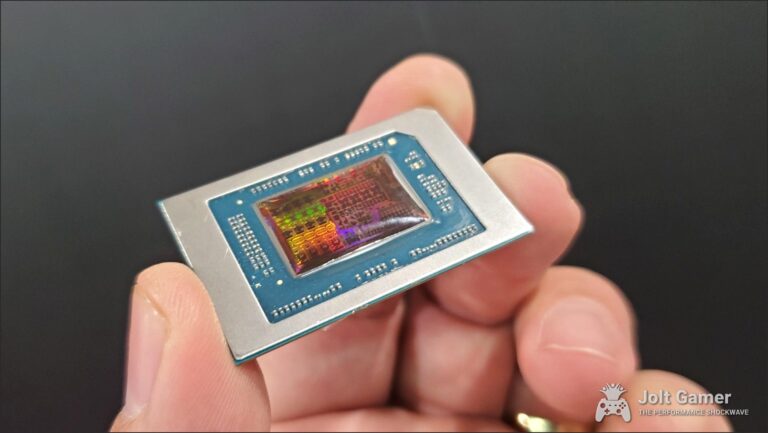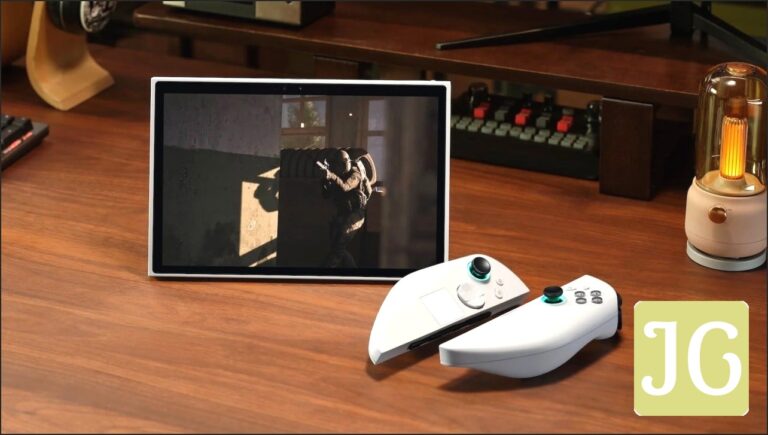The Next Frontier: Introducing the Lenovo Legion Go 2
The world of handheld PC gaming is evolving at a breakneck pace, and Lenovo is once again at the forefront with the highly anticipated Legion Go 2. Unveiled as a prototype at CES 2025 and officially launched at IFA 2025, this successor to the original Legion Go promises a suite of significant upgrades, from a stunning OLED display to the formidable AMD Ryzen Z2 Extreme processor. But in a market increasingly crowded with powerful contenders like the ROG Ally X and Steam Deck OLED, can the Legion Go 2 justify its premium price tag and substantial weight? We dive deep into every facet of Lenovo’s latest portable powerhouse to deliver the definitive analysis.
A Leap Forward: Key Upgrades from the Original Legion Go
- Display Evolution: Transition from 8.8-inch 2560x1600p IPS to 8.8-inch 1920x1200p OLED with VRR and native landscape orientation.
- Raw Power Boost: Upgraded from AMD Ryzen Z1 Extreme to Z2 Extreme, with RDNA 3.5 graphics (16 cores vs. 12 cores).
- Memory & Storage: Doubled RAM capacity (up to 32GB LPDDR5X) and SSD storage (up to 2TB M.2 PCIe Gen 4).
- Enhanced Ergonomics: More rounded design, improved detachable TrueStrike controllers, repositioned buttons, and Hall effect joysticks.
- Battery Life: Significant increase from 49.2Whr to 74Whr.
- Software Refinements: Planned Xbox interface integration and a redesigned Legion Space software.
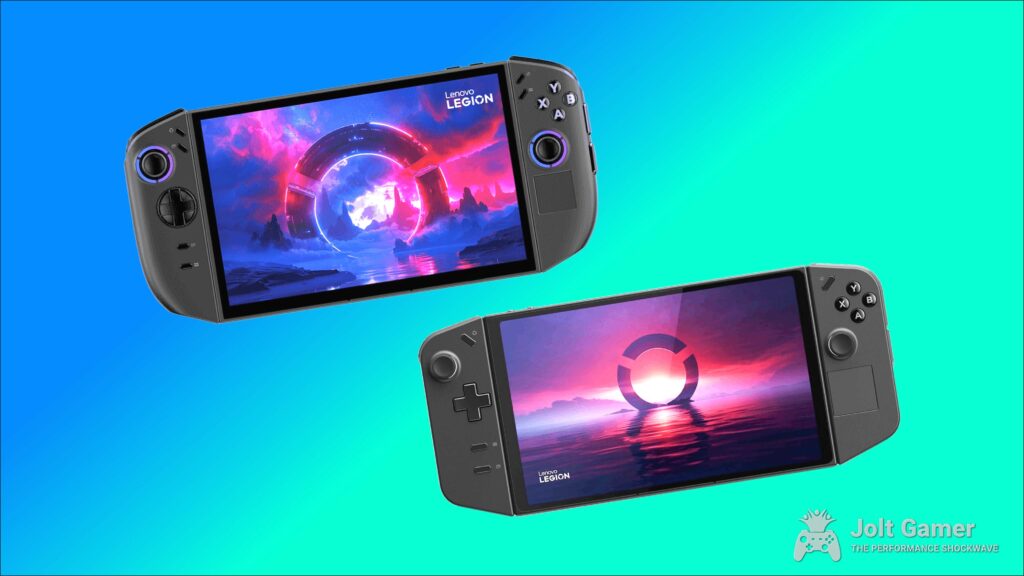
The OLED Advantage: Visual Fidelity Redefined
The shift to an 8.8-inch 1920x1200p OLED display is arguably the Legion Go 2’s most compelling upgrade. While the resolution is a step down from the original’s 2560x1600p IPS panel, this strategic move reduces graphical demands, allowing the powerful Z2 Extreme APU to shine more consistently at native resolution. The OLED panel itself delivers superior visual fidelity with true blacks, vibrant colors (135.8% DCI-P3, 191.7% sRGB), and enhanced contrast, making subtle details pop in dark scenes. Crucially, it supports Variable Refresh Rate (VRR) from 30-144Hz and boasts a native landscape orientation, rectifying a major compatibility headache from the original. However, at 445 nits, it’s dimmer than some rivals and its glossy finish can lead to reflections, a minor trade-off for the otherwise stunning visual experience.
Under the Hood: Lenovo Legion Go 2 Specifications
Lenovo Legion Go 2 Core Specifications
- Processor Options
- AMD Ryzen Z2 / Z2 Extreme (Zen 5 CPU, RDNA 3.5 Graphics)
- Graphics Cores
- Z2 Extreme: 16 RDNA 3.5 Cores
- RAM
- 16GB / 32GB LPDDR5X-7500MHz
- Storage
- 1TB / 2TB M.2 PCIe Gen 4 SSD (expandable via microSD)
- Display
- 8.8-inch OLED PureSight Touch, 1920x1200p, 144Hz VRR, 500 nits peak brightness
- Battery
- 74Whr (4-cell)
- Operating System
- Windows 11 Home (with planned Xbox interface integration)
- Connectivity
- 2x USB4 Type-C, 3.5mm headphone jack, microSD card slot, Wi-Fi 6E, Bluetooth 5.3
- Audio
- 2x 2W Stereo Speakers with Nahimic Audio
- Weight (with controllers)
- 2.03 lbs (920g)
- Dimensions (with controllers)
- 295.6mm x 136.7mm x 42.25mm (11.64 x 5.38 x 1.66 inches)
- Controllers
- Detachable TrueStrike, Hall-effect joysticks, redesigned D-Pad, FPS mode
Performance Unleashed: Benchmarking the Z2 Extreme
Powered by the AMD Ryzen Z2 Extreme processor, featuring Zen 5 CPU cores and 16 RDNA 3.5 graphics cores, the Legion Go 2 delivers a noticeable performance uplift over its Z1 Extreme predecessor. Benchmarking reveals significant gains, particularly at lower resolutions (800p), where games like ‘Tony Hawk’s Pro Skater’ hit 73-93 FPS and ‘Marvel’s Midnight Suns’ maintained a solid 60 FPS cap. Even demanding titles like ‘Cyberpunk 2077’ achieve playable framerates (47-57 FPS at 800p). While 1200p naturally sees a dip, titles like ‘Red Dead Redemption 2’ remain fluid at 46-50 FPS. The efficient cooling system keeps the Z2 Extreme averaging around 65°C, with comfortable external temperatures, even under sustained load. However, the community’s ‘underwhelm’ sentiment regarding the Z2 Extreme’s incremental upgrade over the Z1 Extreme, especially compared to expectations for a new generation, is a valid point, suggesting that while powerful, it might not be the monumental leap some hoped for.
Legion Go 2 In-Game Performance (AMD Ryzen Z2 Extreme, 800p)
Loading chart data…
Ergonomics & Innovation: The Detachable TrueStrike Controllers
Lenovo has significantly refined the Legion Go 2’s ergonomic and industrial design. The device boasts a more rounded, comfortable shape, and while the overall unit is thicker and heavier (2.03 pounds), the subtle tilt of the screen and the redesigned, larger controllers reduce hand strain. The detachable ‘TrueStrike’ controllers, reminiscent of Nintendo Switch Joy-Cons, now feature Hall-effect joysticks to combat drift, a much-improved D-pad, and strategically repositioned buttons for easier reach and fewer accidental presses. The unique ‘FPS mode’ with its vertical base and mouse sensor remains, offering a distinct advantage for certain genres. However, the increased weight is a persistent concern among the community, impacting long gaming sessions, and the power button’s placement can still be a stretch.
Legion Go 2 Design & Ergonomics
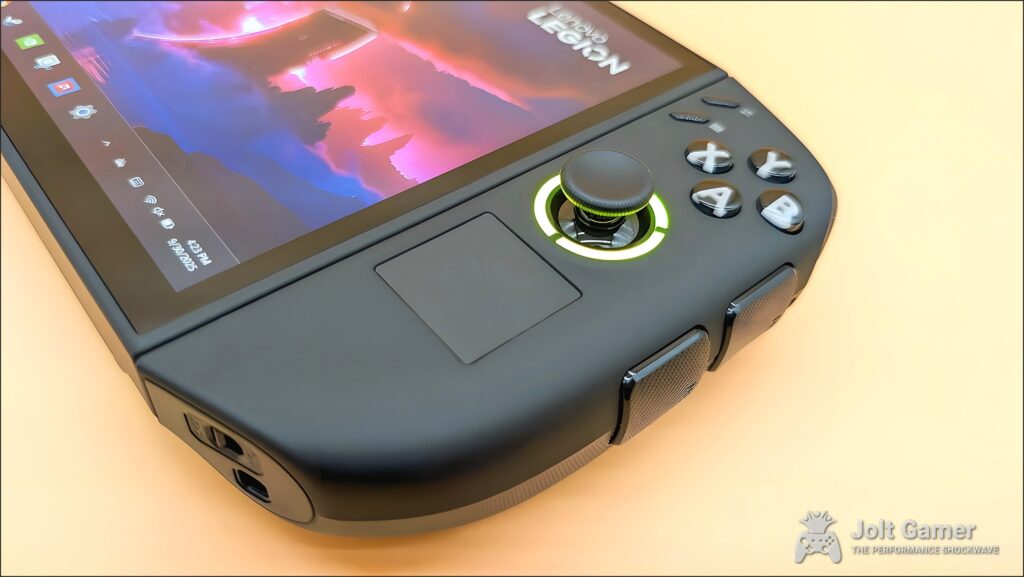
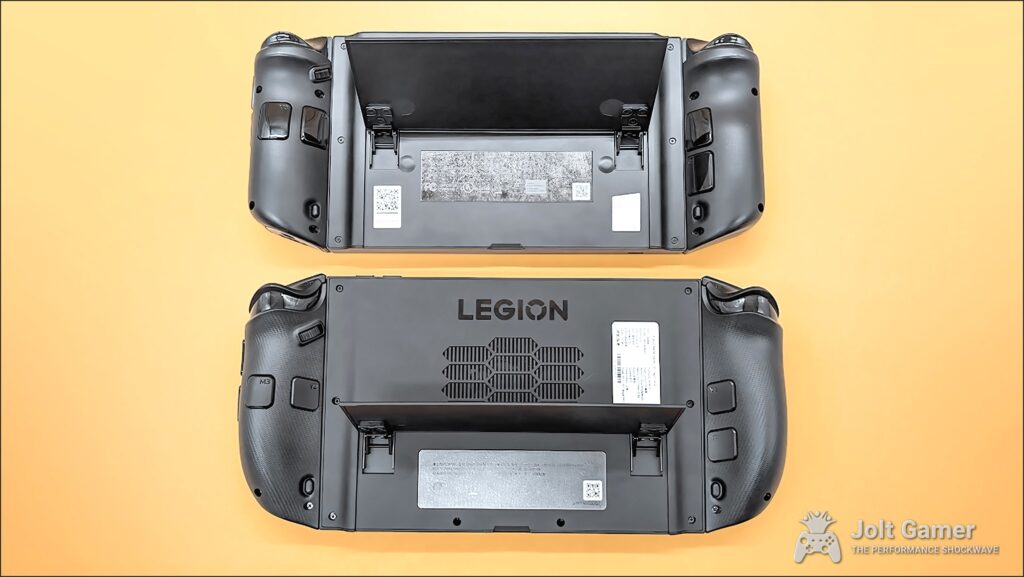
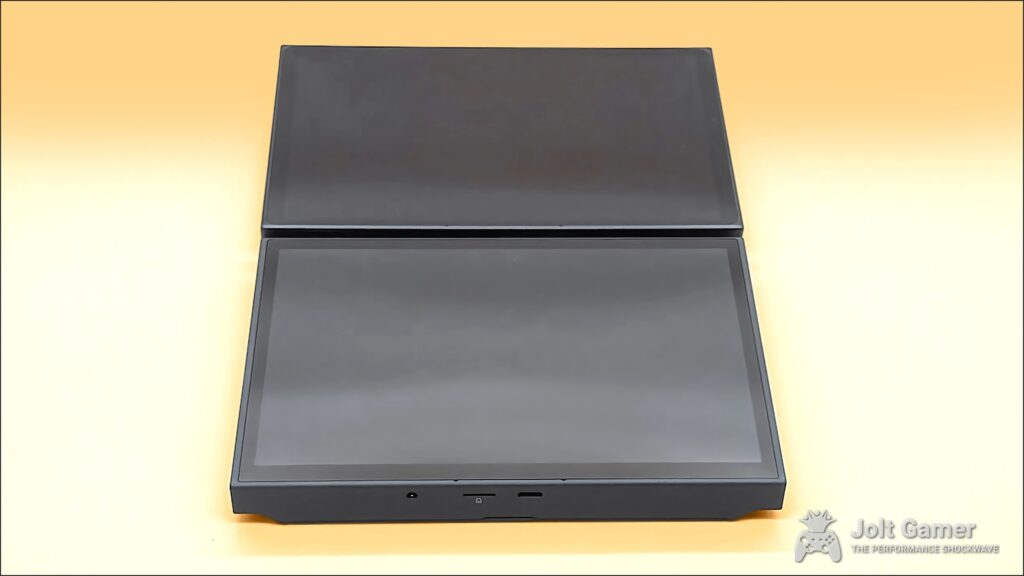
The Software Experience: Windows 11 & Legion Space
Running on Windows 11 Home, the Legion Go 2 benefits from the vast PC gaming ecosystem but inherits some of Windows’ quirks for handheld use, often requiring touchscreen interaction for launcher logins. Lenovo’s proprietary ‘Legion Space’ software, while intended to unify the experience, has been a source of frustration. Historically plagued by freezing, inconsistent launching, and unreliable control remapping, it has also provided false firmware update prompts and suffered from persistent typos. While Lenovo plans a full redesign of Legion Space and integration of the new Xbox interface (expected Spring 2026), these are future promises. For now, the software experience remains a significant area for improvement, echoing past issues with inconsistent driver support that necessitated risky third-party solutions for the original Go.
Software Spotlight: The Xbox Interface
The Legion Go 2 is slated to receive the new Xbox interface, previously seen on Asus ROG Xbox Ally devices, by Spring 2026. This custom OS experience boots directly into an Xbox app, keeping Windows operations in the background to allocate more system resources to gaming, thereby improving performance. This is a significant step towards a more console-like, optimized handheld gaming experience.
Market Showdown: Legion Go 2 vs. The Competition
The handheld PC gaming market is fiercely competitive, and the Legion Go 2 enters a ring with established heavyweights and formidable new contenders. Its starting price of $1,099.99 for the base Z2 model and $1,349.99 for the Z2 Extreme configuration positions it firmly in the premium segment, notably higher than rivals like the Asus ROG Ally X ($999 for Z2 Extreme) and the Steam Deck OLED 1TB ($649). While the Legion Go 2 uniquely offers both an OLED display and detachable controllers, its increased weight and higher price point demand a thorough comparison.
Legion Go 2 vs. Key Handheld Rivals
| Feature | Lenovo Legion Go 2 | Asus ROG Ally X | Steam Deck OLED (1TB) |
|---|---|---|---|
| Processor | AMD Ryzen Z2 / Z2 Extreme | AMD Ryzen Z2 Extreme | Custom AMD APU (Zen 2 + RDNA 2) |
| Display | 8.8″ 1920x1200p OLED, 144Hz VRR | 7″ 1080p IPS, 120Hz VRR | 7.4″ 1280×800 OLED, 90Hz VRR |
| RAM | Up to 32GB LPDDR5X | Up to 32GB LPDDR5X | 16GB LPDDR5 |
| Storage | Up to 2TB M.2 PCIe Gen 4 SSD | Up to 1TB M.2 2280 SSD | 1TB NVMe SSD |
| Battery | 74Whr | 80Whr | 50Whr |
| Detachable Controllers | Yes | No | No |
| Weight (with controllers) | 2.03 lbs (920g) | 1.47 lbs (670g) | 1.41 lbs (640g) |
| Starting Price (Z2 Extreme Equivalent) | $1,349.99 | $999.99 | $649.99 |
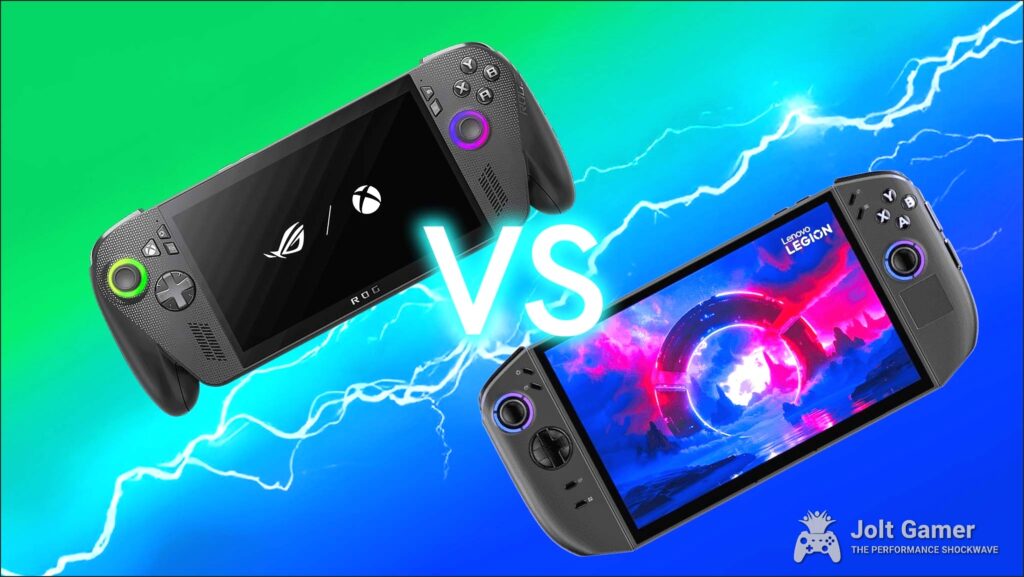
The Fandom Pulse: Community Reactions & Concerns
JoltGamer’s ‘Fandom Pulse’ analysis reveals a community simultaneously impressed and conflicted by the Legion Go 2. There’s widespread admiration for the innovative features, particularly the large OLED screen and refined ergonomics. However, this enthusiasm is tempered by significant concerns.
Nailed everything other than the price <3
The prohibitive price is the dominant point of ‘Frustration,’ limiting accessibility for many. While the device’s power is acknowledged, a sense of ‘Underwhelm’ persists regarding the Z2 Extreme’s incremental performance upgrade over its predecessor, leading many to consider waiting for future generations. Furthermore, despite ‘Appreciation’ for the immersive screen and ergonomic design, ‘Concern’ over the device’s substantial weight (almost 1kg) and the compromises introduced by detachable controllers continues to fuel debate. The overall narrative is one of anticipation for a more refined and affordable future, reflecting a discerning community weighing innovation against practicality and value.
The Verdict: Pros and Cons
Pros
- Stunning 8.8-inch 1200p OLED display with VRR and native landscape orientation.
- Powerful AMD Ryzen Z2 Extreme processor with RDNA 3.5 graphics.
- Significantly improved ergonomics and more comfortable detachable TrueStrike controllers with Hall-effect joysticks.
- Increased battery capacity (74Whr) for longer playtimes.
- Unique ‘FPS mode’ offers a distinct input advantage.
- Future-proofed with planned Xbox interface integration and redesigned Legion Space software.
- Expandable storage up to 2TB SSD + microSD.
Cons
- High starting price ($1,099-$1,349) makes it significantly more expensive than rivals.
- Substantial weight (2.03 lbs / 920g) can lead to hand strain during long sessions.
- Z2 Extreme offers an incremental rather than revolutionary performance upgrade over Z1 Extreme.
- Current Legion Space software is still buggy and inconsistent.
- OLED screen is dimmer and glossier than some competitors, leading to reflections.
- Power button placement can be awkward in handheld mode.
A Premium Powerhouse with a Premium Price
The Lenovo Legion Go 2 is undeniably an impressive piece of gaming hardware. Its gorgeous OLED display, refined ergonomics, and powerful Z2 Extreme APU make for a compelling package, especially for those who value the versatility of detachable controllers and a large, immersive screen. It’s a true enthusiast device, pushing the boundaries of what a handheld PC can be. However, its significant weight and, more critically, its premium price tag, which positions it well above its closest competitors, cannot be ignored. While it ‘nails everything’ in terms of innovation and features, the cost of entry and the incremental performance gains for the Z2 Extreme might lead many to pause. For those willing to invest in a truly unique, feature-rich handheld experience, the Legion Go 2 delivers. For others, the wait for a more affordable or even more significantly upgraded future generation might be the more pragmatic choice. It’s a device that demands admiration, but also careful consideration.
Frequently Asked Questions About the Legion Go 2
When is the Lenovo Legion Go 2 release date?
The Lenovo Legion Go 2 was officially unveiled at IFA 2025 and is slated for a global launch in October 2025. Pre-orders are available now at select retailers.
What are the pricing options for the Legion Go 2?
The base model with an AMD Ryzen Z2 APU starts at $1,099.99. The more powerful Z2 Extreme version begins at $1,349.99, with a fully maxed-out configuration costing $1,479.99.
Does the Legion Go 2 have an OLED screen?
Yes, a significant upgrade is its 8.8-inch 1920x1200p OLED display, offering superior visual fidelity, VRR, and native landscape orientation.
Is the Legion Go 2 much heavier than other handhelds?
Yes, at 2.03 pounds (920g) with controllers attached, it is thicker and heavier than its predecessor and competitors like the ROG Ally X (1.47 lbs) and Steam Deck OLED (1.41 lbs).
Can I use my original Legion Go controllers with the Legion Go 2?
Yes, the Legion Go 2 maintains backward compatibility, allowing seamless use of original Legion Go controllers.
Will the Legion Go 2 get SteamOS?
Lenovo has confirmed no specific plans to launch the Legion Go 2 with SteamOS, remaining committed to Windows handhelds for this model, despite offering a SteamOS variant for the budget-friendly Legion Go S.

